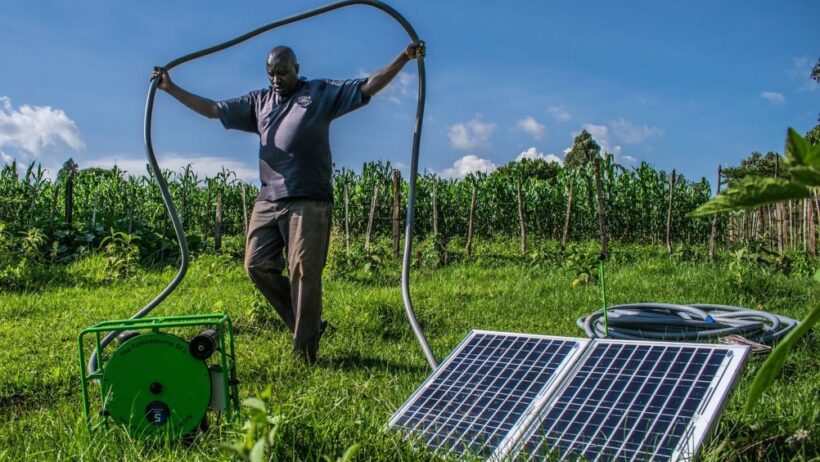In the context of US economic resilience, it is essential to consider the intricate relationship between agriculture and climate change. How will the agricultural sector respond to the surging impacts of climate change? This question underscores the substantial challenge confronting farmers, policymakers, and researchers alike as they navigate an increasingly unpredictable environmental landscape. The ability of the agricultural system to adapt and thrive amid changing climatic conditions will be critical in ensuring food security and sustaining economic stability.
The increasing frequency of extreme weather events, shifts in precipitation patterns, and rising temperatures serve as alarming reminders of the ongoing climate crisis. The United States, as a leading agricultural producer globally, bears a significant burden in mitigating these impacts while also enhancing its economic resilience. However, recognizing the precariousness of current agricultural practices is vital in identifying pathways for adaptation.
One of the foremost challenges facing agriculture in the US is the escalating severity of droughts and floods. According to the National Oceanic and Atmospheric Administration (NOAA), these weather extremes not only devastate crop yields but also disrupt supply chains and inflate food prices. For instance, droughts significantly diminish water availability crucial for irrigation, compelling farmers to reconsider their planting schedules, crop selection, and irrigation techniques.
Crop diversification emerges as a potent strategy for bolstering resilience against adverse climatic changes. By cultivating a variety of crops, farmers can mitigate losses when specific crops fail due to unexpected weather patterns. For example, integrating drought-resistant varieties of grains or alternative crops, such as pulses and forages, can provide a buffer against climatic stresses. Additionally, implementing agroforestry practices, which combine agriculture with forestry, can enhance biodiversity and enable better water retention in the soil.
A significant aspect of adapting agriculture to a changing climate also involves re-evaluating traditional farming practices. Conservation tillage and cover cropping are two techniques that can enhance soil health and increase carbon sequestration. By minimizing soil disturbance and maintaining ground cover, farmers can improve water retention, reduce erosion, and foster an environment conducive to microbial activity, essential for nutrient cycling. These practices not only bolster crop resilience but also contribute to mitigating greenhouse gas emissions, positioning agriculture as both an economic powerhouse and a vital ally in climate change mitigation.
Technological innovations further present an avenue for adaptation. Advancements in precision agriculture, such as the use of drones, sensors, and data analytics, equip farmers with the tools to monitor crop health and soil conditions in real time. This data-driven approach enables targeted applications of water, fertilizers, and pesticides, optimizing resource utilization and minimizing environmental impacts. Furthermore, emerging technologies in biotechnology could foster the development of genetically modified organisms (GMOs) that resist pests and tolerate extreme weather, significantly enhancing agricultural productivity in the face of climate change.
Yet, as these transformative changes take root, there exists a pressing need for equitable access to resources and support systems for all farmers, particularly smallholder and marginalized communities. The disproportionate impacts of climate change often exacerbate existing inequalities within the agricultural sector. Therefore, fostering inclusive policies that promote access to education, financial support, and technology will be paramount in ensuring that all farmers can adapt to a changing climate. Government programs and non-profit organizations play a pivotal role in facilitating these efforts, providing training and resources to equip farmers with the necessary tools for resilience.
It’s imperative to recognize that adapting agriculture to climate change also entails collaboration across various stakeholders. Farmers, researchers, policymakers, and civil society must engage in a cohesive dialogue to develop holistic strategies that address both the immediate and long-term challenges posed by climate change. Initiatives such as sustainable farming cooperatives can encourage knowledge sharing and foster innovation, while also providing a collective bargaining power that enhances economic stability.
Public policy plays a critical role in shaping the future of agriculture in the context of climate change. The implementation of subsidies for sustainable practices, investment in research and development, and the establishment of regulatory frameworks that support resilient farming systems are essential components of a robust agricultural policy. Moreover, integrating climate change considerations into land-use planning and resource management will be crucial in safeguarding agricultural ecosystems for future generations.
The viability of agriculture in the United States hinges on the successful navigation of these multifaceted challenges. The prospect of transforming the agricultural sector into a resilient force against climate change is both daunting and exhilarating. Comprehensive strategies that encompass technological innovations, sustainable practices, and equitable policies can empower farmers to confront the uncertainties posed by our changing climate.
Ultimately, the pursuit of resilience in the agricultural sector is more than an economic endeavor; it is a moral imperative. As stewards of the land, farmers hold a profound responsibility to safeguard our environment and ensure the sustainability of food systems for future generations. The intersection of economic resilience and environmental stewardship presents an opportunity to forge a new path forward, one that fosters not only agricultural productivity but also a healthier and more equitable planet.
In summary, adapting agriculture to a changing climate is a complex yet necessary endeavor. The interplay between economic resilience and climate adaptation requires unwavering commitment and collaborative action. Through diversification, innovative technology, inclusive policies, and sustainable practices, the US agricultural sector can rise to meet these challenges head-on, securing its future in an uncertain world.






